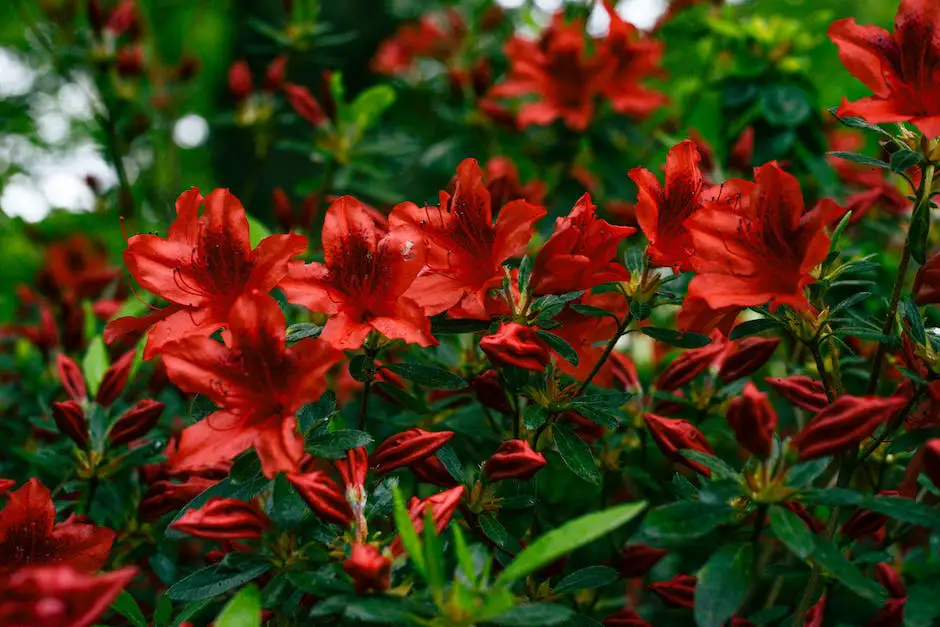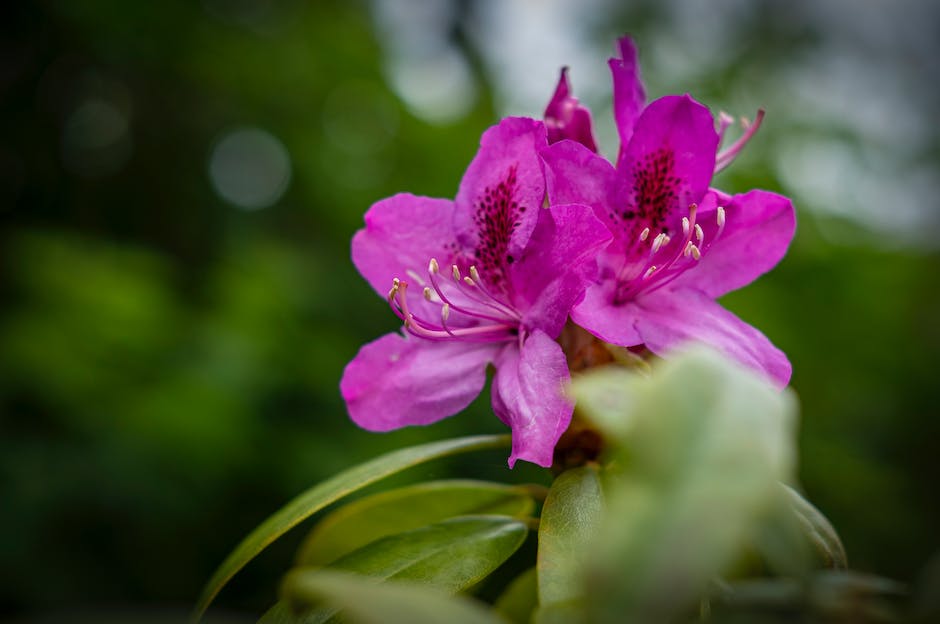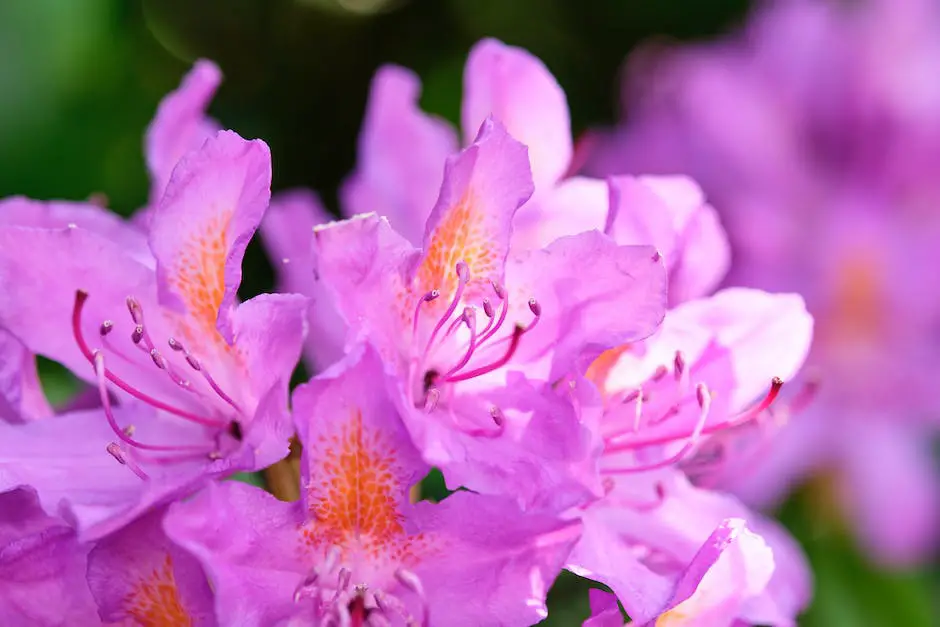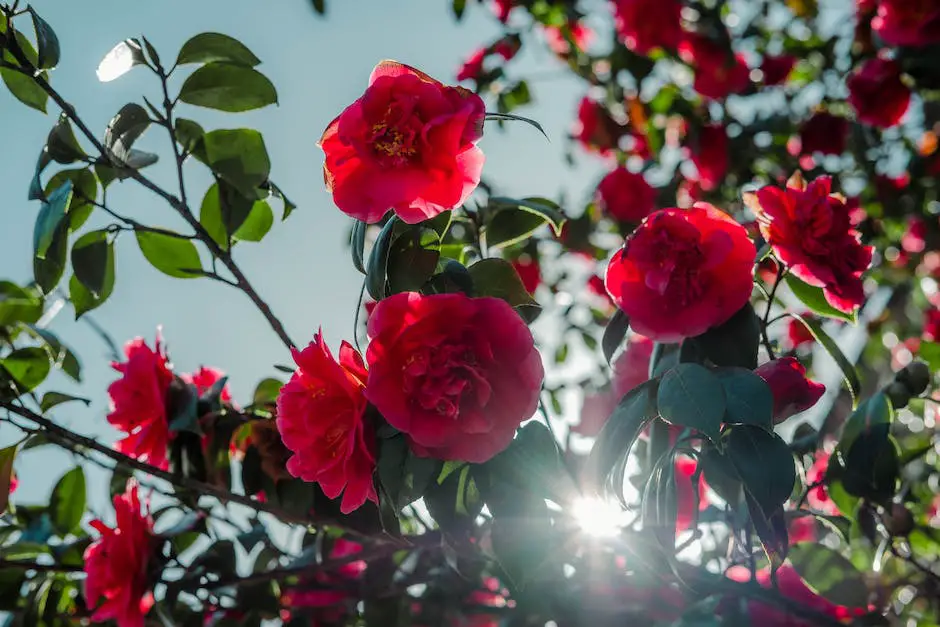Often adorning gardens with their vibrant hues and intricate blooms, Azalea trees boast an assortment of stunning varieties that not only bring aesthetic pleasure but also carry a rich tapestry of sociocultural significance. These perennial beauties, encompassing numerous species and varieties, have an intriguing biological construct – testament to the wonders of nature’s taxonomy. Importantly, the ability to differentiate between Azalea types, their unique attributes, and their cultural importance, enriches our appreciation for these magnificent blooms. Further, an understanding of their care, potential diseases, and propagation techniques equip us to cultivate these flowering gems successfully.
Understanding Azalea Taxonomy
Azalea Taxonomy: Genus and Species
Azaleas are a group of flowering shrubs that fall under the Rhododendron genus. This genus includes both rhododendrons and azaleas, but the latter are usually distinguished by their deciduous nature (many rhododendrons are evergreen) and single-flowered stems. The Rhododendron genus encompasses over 1,000 species, with the azaleas often divided into two main types: the Asian (Tsutsuji and Pentanthera) and the North American (Canescens and Pentanthera).
Asian azaleas are native to Japan and China, while North American azaleas are indigenous to the United States. The differences between these two types are often evident in their flowering times, leaves, and maximum heights. For instance, the Asian azaleas usually bloom in early spring and have small leaves, while the North American azaleas bloom in the summer and fall, exhibiting larger leaves.
Distinct Varieties of Azaleas
Among its numerous species and hybrids, Azaleas have given rise to a vast number of cultivars. These cultivars vary significantly, giving a wide range of flower colors, shapes, and sizes. Some of the well-known azalea cultivars include the ‘Encore’ series, which bloom in spring, summer, and fall, and the ‘Northern Lights’ series, bred for cold-hardiness.
The ‘Encore’ azalea varieties are repeat bloomers that come in colors ranging from white to a variety of pinks and purples. In contrast, the ‘Northern Lights’ cultivars exhibit a kaleidoscope of colors from white and pink to yellow-orange and are known for their ability to withstand temperatures as low as -30 degrees Fahrenheit.
Differentiating Azalea Types
Identifying different types of azaleas often requires an understanding of their leaf and flower anatomy. The deciduous azaleas, for example, showcase a more elongated leaf shape and have tube-like flowers. In comparison, evergreen azaleas possess small, elliptical leaves and flaunt blossom shades that range from pink and white to red and purple.
It should be noted that azaleas can also be sub-classified based on their growth habits. For instance, Kurume azaleas are characterized by their low, spreading growth habit, while Southern Indian azaleas are known for their tall, upright posture.
In terms of geographical distribution, species like the Piedmont Azalea (Rhododendron canescens) thrive in the southeastern United States, while the Japanese Azalea (Rhododendron japonicum) is prevalent in East Asia.
In addition to these observables, hybrid azaleas also bear a great deal of variety. Through careful selective breeding efforts, some azaleas have enhanced traits such as increased cold hardiness, disease resistance, or unique flower formation.
The subject of our discussion in this piece is the taxonomy of the various kinds of Azalea trees, presenting an overview of their distinctive features, primary species and sub-varieties.
Popular Azalea Varieties
The Evergreen Azalea Varieties
Evergreen azaleas, renowned for their bushy, vigorous growth and constant leaf retention, are a common choice among garden enthusiasts. They offer year-round visual interest with their steadfast leaves, seamlessly transitioning into a bloom show of brilliant colors during their flowering season.
-
Hershey’s Red
The “Hershey’s Red” variety is a classic, well-loved by many for its flamboyant red blossoms that steal the show in mid-spring. This compact and easy to grow azalea can reach a modest 3 to 4 feet at maturity.
-
Bloom-A-Thon Reblooming
In contrast, the “Bloom-A-Thon Reblooming” azalea breaks the mold by producing several rounds of radiant flowers throughout the growing season. This variety offers a range of delightful colors, from crimson reds and blush pinks to cool lavenders and pure whites, depending on the specific cultivar.
-
Formosa
Lastly, the “Formosa” is a standout Southern Indica hybrid noted for its large, breathtaking lavender flowers. A fully grown Formosa graces any landscape with its towering presence of up to 8 feet.
Deciduous Azalea Varieties
Contrary to their evergreen comrades, deciduous azaleas lose their leaves in the fall and winter, then leaf out again in the spring. However, they are favored for their vibrant, large, fragrant flowers and brilliant fall foliage colors before the leaf drop.
-
Rosy Lights
“Rosy Lights” is a variety famous for its cold-hardy nature and large clusters of rosy pink flowers. They are often used for aesthetic landscaping in the colder northern areas.
-
Flame Creeper
“Flame Creeper” is a ground cover azalea variety that offers brilliant bright orange miniature flowers. It fits well in small gardens due to its compact spreading nature and is perfect for covering the base of tall trees or shrubs.
-
Plumleaf
The “Plumleaf” azalea is native to the Southern US, distinctive for its late blooming period in the summer when most other azaleas have stopped. They exhibit bright yellow to deep red-orange blossoms.
Understanding Evergreen and Deciduous Azaleas
In examining the differences between evergreen and deciduous azaleas, one major distinction lies in the blooming periods. Many evergreen azaleas sprout their blossoms during the spring time, whereas several deciduous varieties, like the Plumleaf, bloom later in the year rewarding gardeners with late-season hues. Generally speaking, evergreen azaleas favor warmer climates and may struggle to survive in colder regions. Contrastingly, certain deciduous species such as the Rosy Lights are celebrated for their cold-hardiness, thus ideal for gardens located in chillier zones. Another consideration is off-season foliage, where evergreen azaleas maintain their green visual appeal all year round, while deciduous azaleas offer a mesmerizing display of autumn shades prior to their leaf fall.
It’s important to remember that choosing the perfect azalea for one’s garden lies in considerations such as local weather patterns, soil conditions, and individual aesthetic preferences. Both evergreen and deciduous types of azalea bring their unique appeal to any garden setting.

Cultural Significance of Azaleas
The Cultural Impact of Azaleas
Belonging to the Rhododendron plant group, azaleas boast a rich and multilayered cultural legacy spanning across diverse global societies. As vividly colored shrubs that have graced gardens for millenniums, azaleas’ societal influence is well-chronicled and palpable throughout history.
Azaleas in China
In China, the azalea is known as ‘Zi Yu’, and is one of the traditional “four gentlemen” of Chinese flowering plants, along with plum blossom, orchid, and bamboo. They symbolize elegance and wealth and are often given as gifts to wish prosperity and luck to the recipient. It’s not uncommon to see azaleas represented in Chinese art, literature, and music.
Azaleas in Japan
Azaleas also hold a deep cultural significance in Japan, where they are the focus of many traditional festivals, known as ‘tsutsuji matsuri’. The azalea’s vibrant blooms signal the arrival of spring, making it a beloved symbol of renewal and growth. Japanese folklore also associates the azalea with patience and modesty.
Azaleas in Korea
In Korea, the azalea carries poignant symbolism. The flower of the azalea, known as ‘Jindallae’, is emblematic of unrequited love and longing, often featuring in Korean songs and poems to express these emotions. The azalea’s vivid colors and intoxication are thought to reflect the intensity and pain of unreciprocated love.
Azaleas in America
In North America, azaleas are particularly associated with southern states. Numerous festivals, such as the North Carolina Azalea Festival and Mobile, Alabama’s Festival of Flowers, celebrate the azalea’s captivating beauty. They are an integral part of southern charm, beautifying homes, gardens, and public spaces alike.
Azaleas in European Tradition
In European tradition, azaleas are often seen as a symbol of femininity and softness. The Victorians popularized the giving of azaleas as a symbol of temperance, and in ancient Greece, they were associated with the god Apollo and believed to have healing properties.
The symbolism and cultural significance of Azaleas are firmly intertwined with their specific varieties and the local traditions surrounding them. Prominent examples include the Royal Azalea (Rhododendron schlippenbachii) which plays a major role in Korean culture, and the South American Azalea (Rhododendron indicum), renowned in Japan. Such cultural associations not only highlight the Azalea’s universal appeal but also underscore the global impact it has had, manifesting in its extensive presence in numerous cultural festivals and rituals.

Azalea Care and Propagation
Catering to Azaleas: A Guide to Soil Preferences
For optimal growth, Azaleas require loose, well-aerated soil having an acidic pH in the range of 4.5 to 6.0. The plants flourish in soil that is rich in organic matter, facilitating nutrient absorption and moisture regulation. Soil conditions can be improved markedly by incorporating compost or a combination of peat moss, coarse sand, or pine bark. Ensuring that the soil pH stays within the desired range is crucial, which means a regular soil pH test is indispensable. Based on the test results, appropriate amendments must be carried out to preserve the pH balance for the plant’s well-being.
Watering Needs of Azaleas
The watering needs of azaleas are also a critical element of their care. Azaleas require soil that remains consistently damp, but not overly waterlogged. Overwatering can lead to root rot, a common issue for azaleas. It is recommended to water azaleas deeply and thoroughly, rather than frequently with small amounts of water. This watering method encourages the plant to establish a deep and healthy root system.
Sunlight Requirements for Azaleas
In general, azaleas appreciate plenty of indirect light rather than direct, harsh sunlight. Morning sun with afternoon shade is considered ideal. Although many azaleas are shade-tolerant, insufficient sunlight can result in leggy growth and reduced blooming. Conversely, excessive sunlight can scorch the foliage, causing it to yellow and fall off.
Azalea Pruning
Pruning azaleas helps shape the plant, promotes bushier growth, and enhances blooming. It is best to prune azaleas shortly after they finish blooming, as they form the following year’s flower buds soon after the current season’s blooms start to fade. Light pruning can remove spent flowers and thin out overcrowded shoots, while more extensive pruning can help rejuvenate older, leggy bushes.
Azalea Propagation Methods
Propagation of azaleas mainly occurs through hardwood or softwood cuttings, taken usually in the early summer or fall. The lower leaves of an ideal stem cutting, about 4-6 inches in length, are removed, and its base is then dipped in rooting hormone. The cutting is inserted in a prepared soil mix and then kept in a humid environment until roots have developed. However, some varieties of azaleas can also be propagated by layering, where a low growing branch is pegged to the ground till it grows roots.
Varieties of Azalea Trees
The beauty and allure of Azalea trees simply cannot be overstated. Generally speaking, these trees are broken down into two overarching categories – deciduous and evergreen. Deciduous azaleas are identified by their unique Exbury hybrids, a nature that stipulates the shedding of leaves during the fall and winter seasons. However, a silver lining in this phenomenon is the strong, vibrant fall color they exude, coupled with their high tolerance for sunlight and varying soil disparities. Contrarily, evergreen azaleas, such as those commonly found in Japan and Korea, are unchanging in that they proudly display their leaves all year round. This attribute paired with their diverse flower colors and intriguing patterns make them an ideal choice for landscaping initiatives.
Leaf gall presents another fungal foe, responsible for undue growth on leaves, stems or flowers of the afflicted azalea. Parts touched by this disease display pale green or pink hues before they ultimately turn white and harden. Nipping the problem in the bud by manually removing the affected parts before they harden and whiten often provides some respite.
The disease-causing fungus Phytophthora is liable for a condition known as Root Rot, which commonly befalls azalea roots. Lurking in soil indefinitely, this pathogen exploits water to spread its malevolence, making the use of fungicides (paired with well-aerated soil) a cardinal preventive measure.
If you are curious about Azlea tree and want to explore more, check out this article:
Azalea Pests
Among the pests that commonly afflict azaleas, Lace Bugs are the most frequent. These insects damage azaleas by sucking the chlorophyll from the leaves, causing them to turn yellow and spotted. This can be combated by consistent monitoring and application of insecticides.
Azalea caterpillars pose a significant threat to azaleas due to their voracious consumption of azalea foliage. The black and yellow caterpillars are most effectively controlled by vigilance and manual removal from plants.
Azalea’s Natural Enemies and Susceptibility
Azaleas have a few natural enemies besides the Lace Bugs and caterpillars. Deer and rodents can cause substantial damage to the plant by feeding on the leaves, stems, and blooms. Implementing repellents and protective barriers can help avert this issue.
Azaleas can also be highly susceptible to salt injury, often evidenced by the yellowing and dropping of older leaves. It’s recommended to avoid planting azaleas near roads that are salted during winter, or in areas with saline soil or irrigation water.
Azaleas are also sensitive to varying pH levels in the soil. They prefer slightly acidic soil with a pH ranging from 4.5 to 6.0. Using elements such as peat moss or sulfur can help alter the soil’s pH to accommodate the azaleas’ preference.
Proper maintenance, prompt recognition of symptoms and careful prevention are all key in producing a vibrant, healthy azalea. By identifying common diseases and pests and understanding natural susceptibilities, you can ensure your azaleas thrive despite these challenges.

Azaleas, with their diversity, vibrancy, and rich cultural narratives, serve as a compelling metaphor for nature’s profundity. Not only do they bring aesthetic reward, but they also provide a deeper understanding of botanical taxonomy and respect for nature’s resilience against diseases and pests. The knowledge about their care and propagation encapsulates a message of nurturance and growth. Much like these stunning perennials, knowledge about them, too, requires careful cultivation. Thus, as we uncover the stunning varieties of Azaleas, we also give bloom to our understanding, nurturing a deeper bond with the world around us – a connection that, like Azaleas, adds color and beauty to our lives.
Writio: AI-powered content writer for websites and blogs – Creating high-quality, customizable content with relevant images. This article was composed by Writio.




